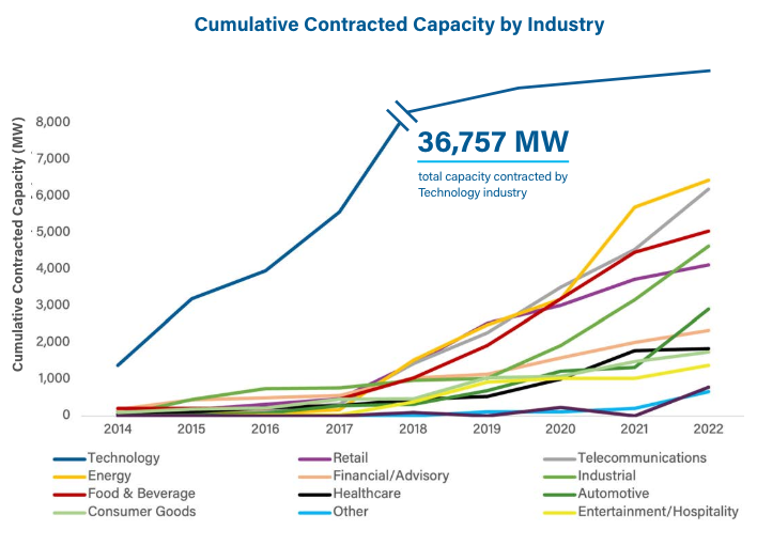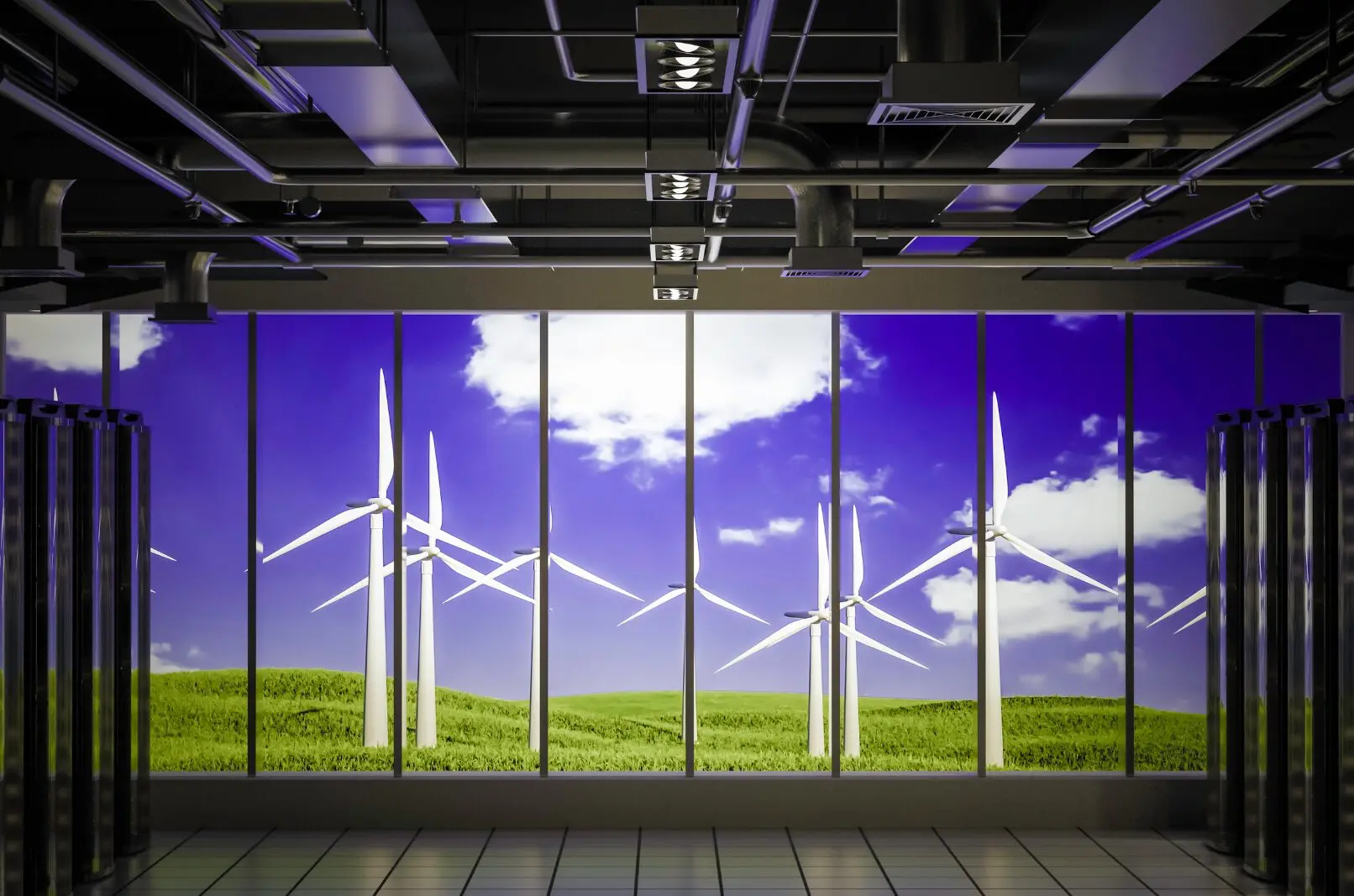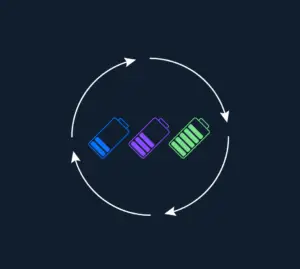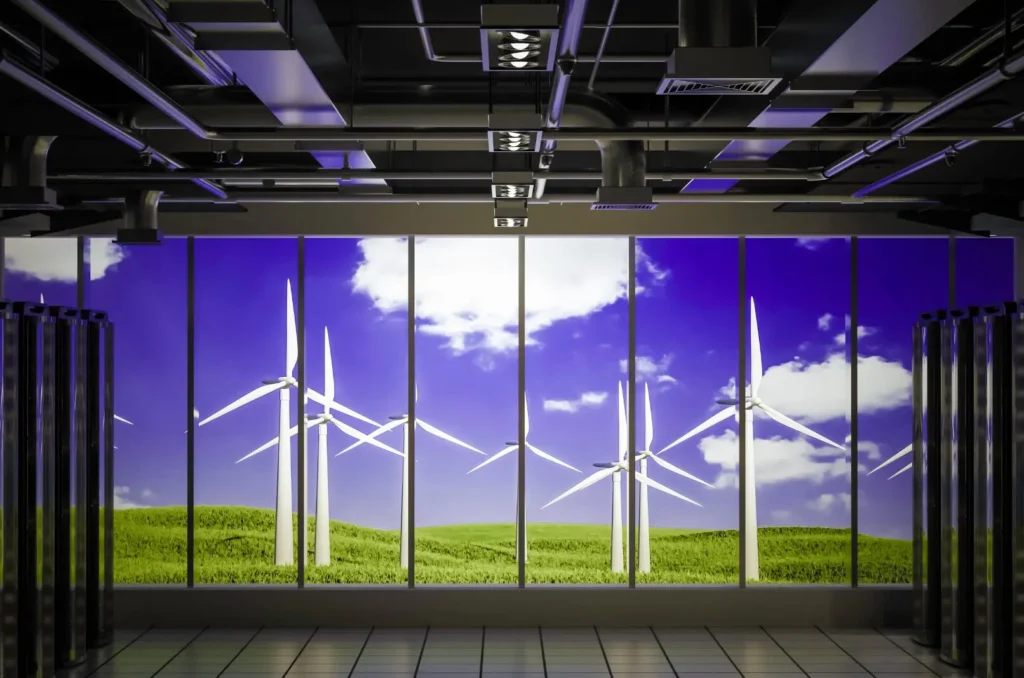Data centers are the backbone of innovation and growth in our increasingly digital world, from cloud computing to the internet of things to expansion of generative AI. In just the past few years the data center industry has boomed, and demand for services and infrastructure bolstering the digital world have grown immensely. In 2023, US data-center space expanded by a remarkable 26%, according to real-estate firm CBRE, with a record amount under construction.
As data centers grow in number and size, so are their energy requirements. The Wall Street Journal reports that the higher density of newer, more powerful computer chips and servers will require about twice as much power per square foot in a data center as a decade ago. Furthermore, the rapid expansion of data centers with high power requirements is expected to increase energy demand up to 3.8 percent per year through 2050, a substantial increase after relatively flat energy demand growth across all sectors over the last decade.
The need for stable, always-available energy supply is another challenge facing data centers. Today the industry relies on the central grid for primary power, and an uninterrupted power supply (UPS) plus diesel generator for backup power in the event of an outage. As renewable energy systems proliferate, the more cost-effective, sustainable, and versatile alternative to diesel gensets is a battery energy storage system (BESS), which are positioned to change the way data centers are powered.
The Cost of Maintaining Power
In the data center and IT management industry, 99.99% uptime is considered the standard guarantee for service level agreements (SLAs). This means the data center providers will take maximum 8 hours of downtime yearly, and providers risk a reputational and financial hit for anything more. According to the Uptime Institute’s 2023 Outage Analysis, 70 percent of data center outage incidents cost $100,000 or more, with 25 percent costing more than $1 million.
In most scenarios, a UPS and a diesel generator work together to provide electricity in a contingency such as power failure. When an outage occurs the UPS switches critical infrastructure to battery power within milliseconds, covering the short delay until the diesel generator starts up. The generator then provides power so long as fuel is available or until the main power supply comes back on.
Large diesel-powered generators now cost as much as $1.5 million each, with waits to get them from manufacturers stretching as long as two years. On top of their high installation costs, diesel generators also have high operational requirements. Most backup systems only turn on once or twice a year and run for a few minutes at most before a data center’s main power supply is restored. Yet these generators require around-the-clock care. Fuel system maintenance includes regular fuel quality testing, treatment, and cleaning of fuel tanks and lines to ensure the generator receives clean and reliable fuel. With generators, data centers rack up high maintenance costs to avoid unplanned downtime and significant repair costs.
Flat-footed in a Rapidly Evolving Industry
Even if data center operators can arrange an ideal backup generator scenario, diesel generator adoption has other implications. Diesel generators commit data center owners to another twenty years of fossil fuel dependency, and their usage by data centers runs counter to US and EU climate goals. Further, due to their non-modular nature, backup diesel generators could limit the expansion of data center operations as needs evolve over time.
Governments are already taking action to restrict the use of generators at data centers. To achieve the Biden administration’s goal of 100% carbon-free electricity by 2035, several states now require data centers and other large corporations to disclose and limit their carbon emissions.
Major corporations like Google, Amazon, Meta, Microsoft, etc. are committed to powering their data center operations with renewable energy to advance initiatives like reducing Scope 1 greenhouse gas emissions. Their commitment is reflected by the technology’s sector huge share of renewable energy consumption.

Image source: American Clean Power; Clean Energy Powers American Businesses (2022)
Two Birds with One BESS
To move beyond diesel generators, battery energy storage systems (BESS) offer a new solution for improving power management and reliability in data centers. Unlike the one-phase, one-function use of diesel generators, a BESS can constantly add value and perform multiple roles including UPS, backup power, load shifting, peak shaving.
Incorporating battery energy storage systems in new data centers not only enhances operational reliability and efficiency but also supports sustainability goals and offers potential economic benefits. Newer types of battery technologies offering wide-duration discharge can be the UPS providing near-instant power response in the event of an outage, and then go on to perform the backup power role that a diesel generator would otherwise fill.
Through load shifting, a BESS allows data centers to store energy during off-peak hours when electricity rates are lower and renewable energy output is highest. It can then be used during peak hours to reduce operational costs. It also helps in managing demand charges, which are fees based on the highest amount of power drawn during a billing period.
Centers are now beginning to optimize energy usage by setting up microgrids consisting of renewables plus energy storage, allowing them to tap into stored power during peak demand periods and seamlessly transition between grid and off-grid modes as needed.
Additionally, to execute on renewable energy commitments of the technology industry, data centers need a mechanism to maintain power quality for their infrastructure. Spotty power supply poses substantial risks to data centers, both with respect to outages and damaging equipment. Battery storage can act as a buffer to renewable energy supply, absorbing and discharging smoother, steady power for data center operations.
Overall, as an alternative to a UPS paired with a diesel generator, a well-designed BESS can provide a range of energy-saving functions in addition to ensuring seamless backup power in the event of a power outage.
Not all BESS are made the same
While it may be true that lithium-ion BESS are already being used in data centers, systems equipped with this type of battery technology present considerable safety challenges, as well as a cycle life that will be shortened with regular use. Systems equipped with lithium-ion batteries have demonstrated that they can go offline or go into a thermal runaway event due to heat, power surges, heavy rain, and other external forces. In addition to putting people at risk, a battery fire has the potential to damage or destroy hundreds of millions of dollars worth of advanced servers and specialized chips—not to mention potentially priceless data.
New battery technologies are designed with safety and sustainability in mind, helping data centers stay online and compliant with local regulations as they expand. They’re also foregoing the toxic and flammable components used in lithium-ion batteries to use new materials that can offer high performance, long cycle life, and inherent resistance to thermal runaway.
To support the expanding needs for reliable power, we need advanced technologies to replace the expensive, polluting diesel generators currently used in data centers. BESS is a more cost-effective, scalable, and safe solution that provides seamless, reliable power as well as a host of other energy management functions. Contact Alsym to learn more about BESS opportunities for data centers.




